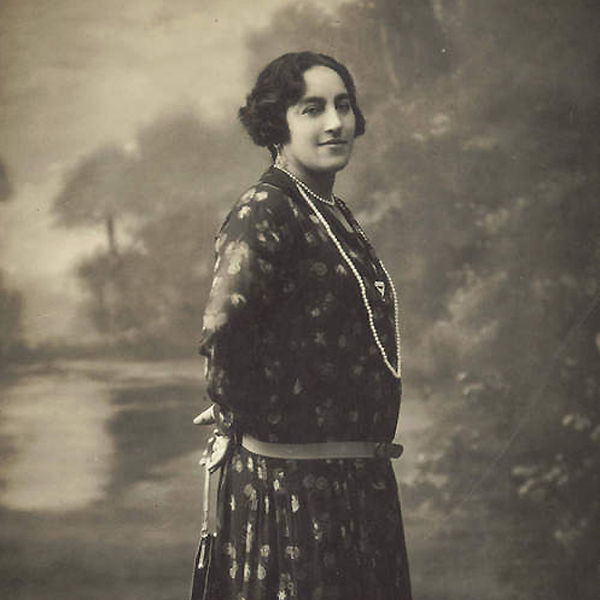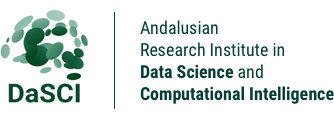Ángela Ruíz Robles Talks

Ángela Ruiz Robles (Villamanín, March 28, 1895-Ferrol, October 27, 1975) was a teacher and inventor with a great teaching vocation. She was an innovator of education in Spain at the end of the 19th and beginning of the 20th century. Her invention “mechanical encyclopedia“, with information on movable reels that could be exchanged for new ones, was the precursor of the electronic book.
Academic and teaching career
Doña Angelita, as her students called her, was born in León in 1895 into a well-to-do family (her father was a pharmacist and her mother a housewife). She studied higher education at the Escuela de Maestras de León, where she gave her first lessons in shorthand, typing and commercial accounting.
In 1917, she was appointed teacher and headmistress of the school of La Pola de Gordón (León) by unanimous agreement of its Municipal Board. In 1918, after winning a teaching post in the National Teacher Training Examinations, she settled in the A Coruña village of Santa Uxia de Mandía, near Ferrol (Galicia).
At the age of 40 she was widowed and in 1928 she moved to Ferrol. In 1934, she was appointed manager of the National School for Girls at the Hospice of Ferrol, an institution in charge of socially integrating abandoned children through primary education, musical education and training in useful trades for the city (shipyards and public works).
Between 1938 and 1970, she published 16 textbooks on various subjects such as spelling, shorthand, typing, grammar, history and geography.
In 1945, she was assigned to the Instituto Ibáñez Martín in the city of Ferrol, where she became its director (1949-1959), a position she held until her retirement.
At the same time, she gave free evening classes at the San José Obrero School (made up of students from the shipyards).
She founded the ELMACA Academy (named after his three daughters, Elena, María Elvira and Carmen). At the academy, located in her own home, she gave classes to candidates for customs, postal and telegraph examinations and for entry to higher commercial studies. She had the highest pass rate in Spain.
3 Inventions, 2 patents, 0 funding
From her early days as a teacher, she realized that education was lagging behind the technological advances of the time. For that reason, her great ingenuity was focused on innovation, on discovering more creative and visual learning methods for her students.
In 1916 she created her first invention, a shorthand system that she perfected in the 1940s. In 2 of her books published in 1938 and 1941, she describes a shorthand system with which to write and translate faster thanks to a machine with new signs and characters linked in a simple and systematic way.
In 1949 she invented the “mechanical book”. In the patent (190698) it is described as a “mechanical, electrical and air-pressurized procedure for reading books”. It was a device for “intuitive, pleasant teaching and for quickly taking advantage of the moments when the attention could be fixed on a certain point”.
It consisted of plates on which areas could be pressed and, thanks to an electric circuit, illuminated text with explanations. In the patent he intended that the sheet was “luminous” and a magnifying system to facilitate reading. He did not obtain financing for its manufacture and paid the patent religiously until 1961.
From 1952 she was working on the “Encyclopaedia Mechanica”, more ambitious than the mechanical book. In this “encyclopedia” the contents of each subject are developed along strips of paper arranged on interchangeable reels. These rolls moved behind a transparent screen with optical qualities. It included surfaces to make notes and erase writing, alphabets to form syllables, words or small sentences, recorded sounds and from various compartments school drawing material and scientific instruments (clock, compass, thermometer, barometer).
In 1958 she published the Atlas Científico-Gramatical, where Spanish could be learned at the same time that the geography of Spain was known. The contents were shown relating the lessons of spelling, morphology, phonetics and syntax with the geography of the country.
She patented the “Mechanical Encyclopedia” in 1962 (patent 276346) and built her first prototype in the Artillery Park of Ferrol made of bronze (alphabets), wood (coils) and zinc (box).
In 1970 she had a proposal from the USA to manufacture her invention but she rejected it because she wanted it to be usable in Spain. In 1971, the Instituto Técnico de Especialistas en Mecánica Aplicada, S. A. (ITEMASA) made a feasibility plan for the product. It was intended to manufacture 10,000 units in steel and plastic, with a weight of 150 grams and a price between 50-75 pesetas (affordable to all families). But the amount of money (100,000 pesetas) that the inventor had to pay was beyond her means.
Doña Angelita, the pioneer of the electronic book, died in 1975 paying punctually the fees for her invention, which she was unable to develop and distribute.
Social aspect
Doña Ángela was a vocational teacher, close and dedicated. She went out of her way for her students and her role never ended in the classroom.
In 1934, she was appointed manager of the National School for Girls at the Hospice of Ferrol, an institution in charge of socially integrating abandoned children through primary education, musical education and training in useful trades for the city (shipyards and public works).
That same year, the Teachers’ Depuration Commission of La Coruña opened a disciplinary file against Ruiz Robles (of deep religious convictions) because of suspicions arising from a subscription of 50 cents a month that she made in good Christian charity in favor of a fund to help the families of teachers imprisoned because of the Asturias Revolution. Finally, the file was closed (1941) without Ruiz Robles ever being sanctioned.
During 1945, she was a teacher at the Escuela Obrera Gratuita. She never stopped teaching, never needed more than the desire to do so to commit herself to a project.
In her academy ELMACA in Ferrol, she gave classes to candidates during the day and during the night, she helped people with few resources to be trained.
In addition, the academy became a social center. Letters from their emigrant relatives were read and written to the illiterate, literary gatherings were held, food distribution was organized and religious processions could be watched.
Awards
- (1947) Cross of Alfonso X the Wise, for her social work and pedagogical innovations in recognition of her professional career. The award was made at the City Hall of Ferrol (La Coruña) on July 19, 1950.
- (1952) Gold Medal and Diploma at the 1st National Exhibition of Spanish Inventors.
- (1956) The Ministry of National Education awarded the Ribbon of the Order of Alfonso X the Wise.
- (1957) Oscar for invention at the Official and National Fair of Zaragoza.
- (1957) Bronze Medal at the Brussels International Exhibition.
- (1958) Bronze Medal for the pedagogical novelties of Brussels.
- (1959) Appointed Delegate Manager of Spanish Inventors for the Region of Galicia.
- (1963) Silver Medal at the International Exhibition of Inventions in Brussels.
- (1964) Diploma and Medal at the Seville Exhibition.
- (1968) Geneva Medal to the Spanish Inventors.
- (1970) Exhibition at the Salón de la Inventiva at the Palacio de Cristal in Madrid.
- (1973) She is appointed Provincial Head of the International Polytechnic Scientific Federation of Inventiveness. She belongs to the Scientific Polytechnic Federation of the International Inventive as an Engineer in Inventive and Scientific Research.
- In 2018 she was included in the Periodic Table of Female Scientists to commemorate in 2019 the International Year of the Periodic Table of Chemical Elements, due to the 150th anniversary of Mendeleev’s publication.
Get to Know her
Descripción para este bloque. Usa este espacio para describir tu bloque. Servirá cualquier texto. Descripción para este bloque. Puedes usar este espacio para describir tu bloque. Descripción para este bloque. Usa este espacio para describir tu bloque. Servirá cualquier texto. Descripción para este bloque. Puedes usar este espacio para describir tu bloque.
Our Tech Talks
Open Hardware for Security
Tuesday, February 22th at 6.30 p.m.
Paula de la Hoz is a computer engineer, broadcaster, and security expert. Founder and President of Interferencias, an association for digital rights and privacy on the Internet. She currently works as Threat Intelligence at SentinelOne.
MESSI on cell signaling networks and other mathematical issues
Friday, May 20th at 6.30 p.m.
Alicia Dickenstein, Mathematician and Professor at the University of Buenos Aires. She is well-known for her work in algebraic geometry. In 2021 she received the L’Oréal-UNESCO Women in Science Award for her scientific career. Twitter: @ADickenstein
Digital Technologies for #SmartTourism
Tuesday, July 20, 2022 6:30 pm
Deputy Director of DaSCI, specialized in New Technologies applied to Heritage and scientific advisor to AgeO 3D Tech and Aumentur.





